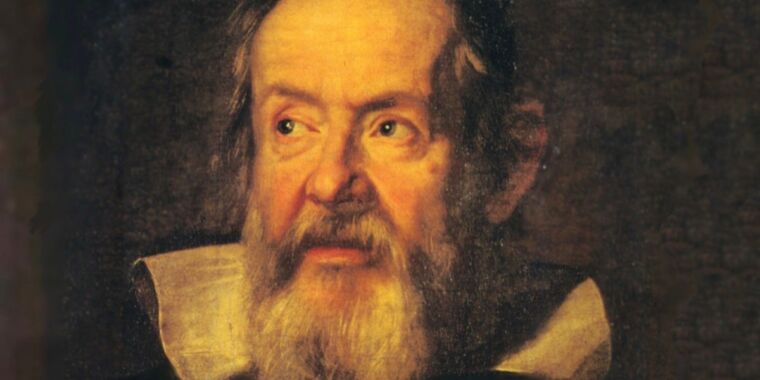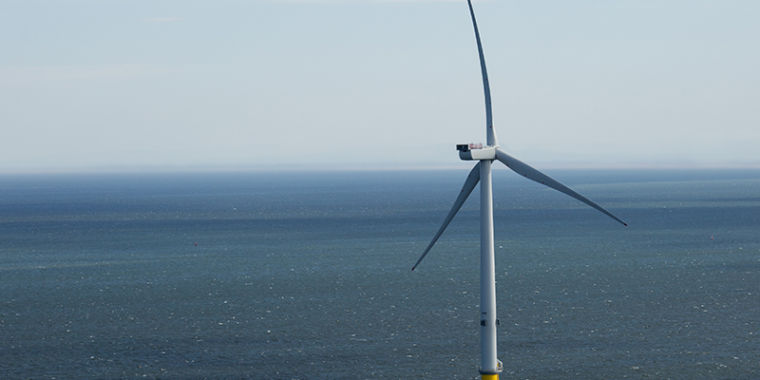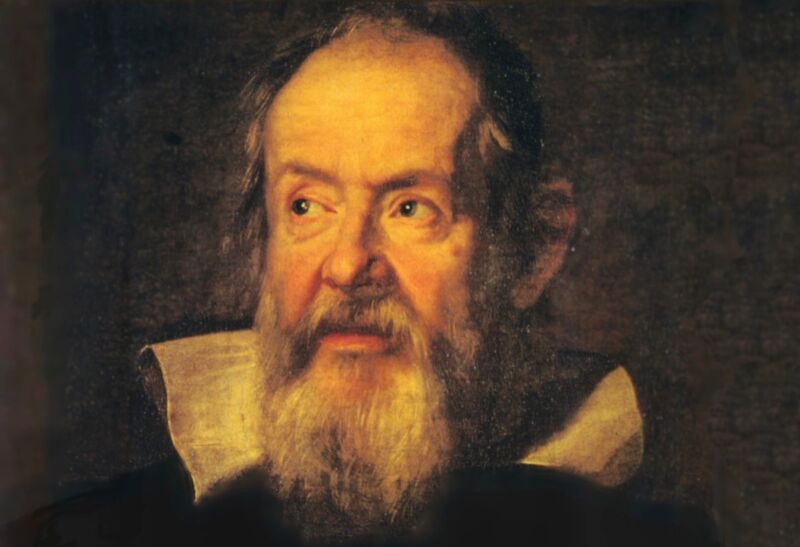
Public domain
In August, we reported that a letter presumably written by Galileo Galilei—part of the collection of the University of Michigan’s library—was actually a forgery, along with a similar document in the Morgan Library in New York City. Now that investigation has led to another discovery. An Italian historian has concluded that Galileo authored a 17th century treatise on astronomy under a pseudonym.
The Michigan letter purported to be a draft of an August 24, 1609, letter that Galileo wrote to the doge of Venice describing his observations with a telescope (occhiale) he had constructed. (The final letter is housed in the State Archives in Venice.) But Georgia State University historian Nick Wilding became suspicious of the manuscript’s authenticity while working on a biography of Galileo. Wilding has exposed Galileo-related forgeries in the past, most notably a copy of Sidereus Nuncius in the possession of a New York City rare-book dealer.
Michigan’s conservation laboratory determined that the ink and paper of its manuscript were consistent with the period when Galileo made his observations, but any hope of authenticity was dashed after Wilding’s investigations into the watermark. It matched documents dating back to 1790—150 years after Galileo made his discoveries.
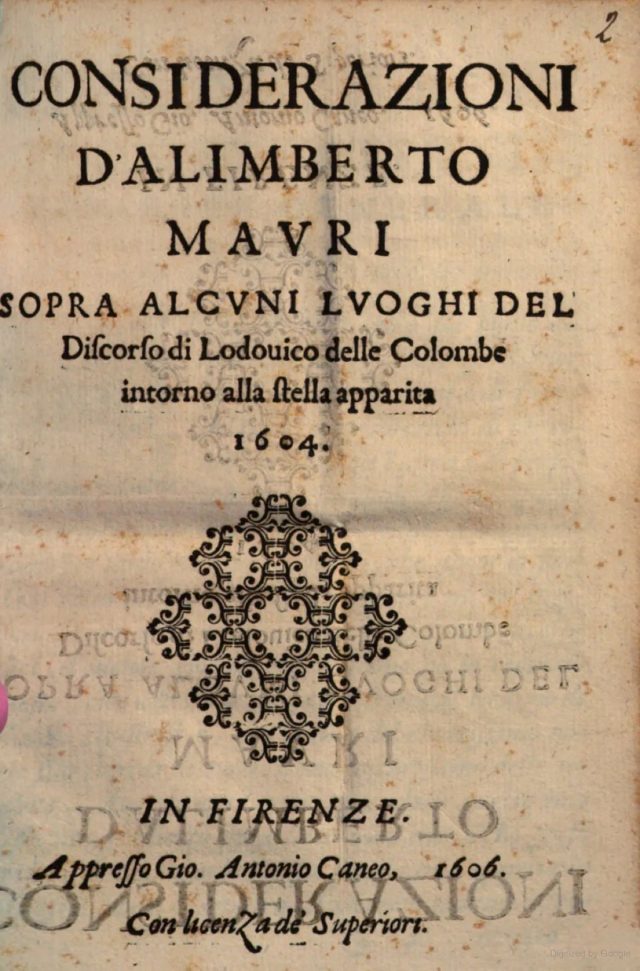
Pubic domain
The Michigan letter had been authenticated by an archbishop of Pisa named Cardinal Pietro Maffi. The cardinal had two other documents in his collection purportedly signed by Galileo, and Maffi used those documents as comparisons. But these were later also shown to be forgeries. And one of them (a letter) was believed to have accompanied a 1606 treatise, Libro della Considerazione Astronomica, published under the pseudonym Alimberto Mauri. The text argued for the existence of mountains on the moon, among other insights, and attributed the motion of celestial bodies following nonuniform paths to physical causes.
The suggestion that Galileo may have written the 1606 treatise started circling shortly after it was published. For instance, according to Matteo Cosci, a historian at Ca’ Foscari University of Venice, one of Galileo’s University of Padua colleagues, Fortuna Liceti, described the pseudonymous Mauri as someone who was an expert mathematician “pretending” to be an astronomer.
Galileo was known to use pseudonyms. For instance, he engaged in in a debate over the 1604 supernova (the subject of Johannes Kepler’s 1606 treatise De Stella Nova) under the name Cecco da Ronchitti. Philosopher Lodovico delle Colombe believed this new star wasn’t new; it had always been there, but it wasn’t always visible. He adhered to the Ptolemaic model of the solar system, in which stars were fixed and unchanging. Galileo was a professor at the University of Padua at the time, and was also interested in this “stella nova.” He thought it was a new phenomenon, not a permanent star, and even proposed possible mechanisms by which it might have been produced.
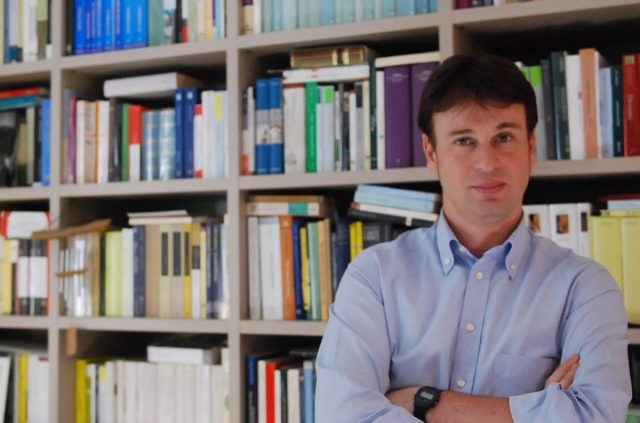
Ca’ Foscari University of Venice
Delle Colombe published his thoughts on the “stella nova,” citing not just astronomical observations but also Aristotle and other notable philosophers. A few months later, Considerazione Astronomica appeared. “Mauri” argued that astronomy should focus on observations and mathematics rather than Aristotle, and referred to delle Colombe as “our pigeon.”
Delle Colombe never explicitly identified Galileo as his adversary. But in his Risposte piacevoli e curiose (1608), he did indirectly refer to said adversary as “Mr. Mask” and “that professor that was a lecturer in Padua.” And a student at the time wrote “Galileo Galilei” under the subtitle of his copy of Risposte (“a knowing mask named Alimberto Mauri”)
Scholars in the 1970s cited the Maffi letter as evidence that Galileo had authored Considerazione Astronomica. When that letter turned out to be a forgery, Galileo’s authorship was cast in doubt. But Cosci doggedly scoured the archives at the Biblioteca Nazionale Centrale in Florence, specifically a collection of Galileo’s handwritten notes covering various topics at different time periods, which had never been published, and uncovered new evidence to support the hypothesis.
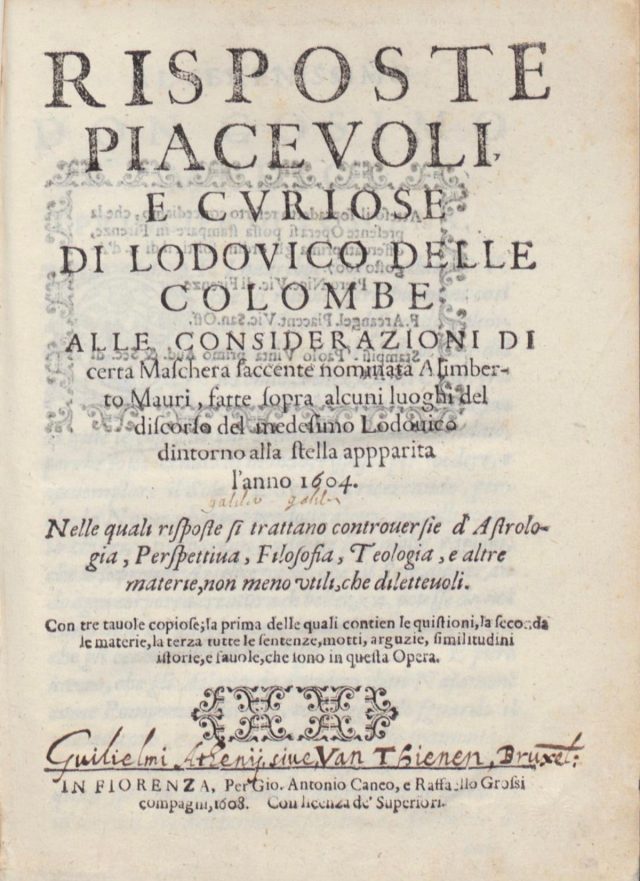
The strongest evidence he found for Galileo’s authorship of Considerazione Astronomica is a list the astronomer made of “places where [delle Colombe] speaks of me with contempt.” Those “places” were specific references to select passages in delle Colombe’s Risposte, but when Cosci looked them up, the references were attacking the pseudonymous Alimberto Mauri. Cosci reasoned that Galileo would not have felt personally attacked by these contemptuous references unless he was, indeed, Mauri.
Cosci’s research also unearthed a handwritten note by Galileo indicating that the astronomer was considering another reply to delle Colombe, but decided it just wasn’t worth his time. They were still arguing years later—about the motion of the Earth (mentioned in Sidereus Nuncius), the surface of the moon, and floating bodies, among other subjects—but by then, Galileo was famous and no longer felt the need for a pseudonym, per Cosci. The historian is now preparing a new edition of Considerazione Astronomica highlighting his analysis of key textual similarities between that treatise and Galileo’s other written works.

